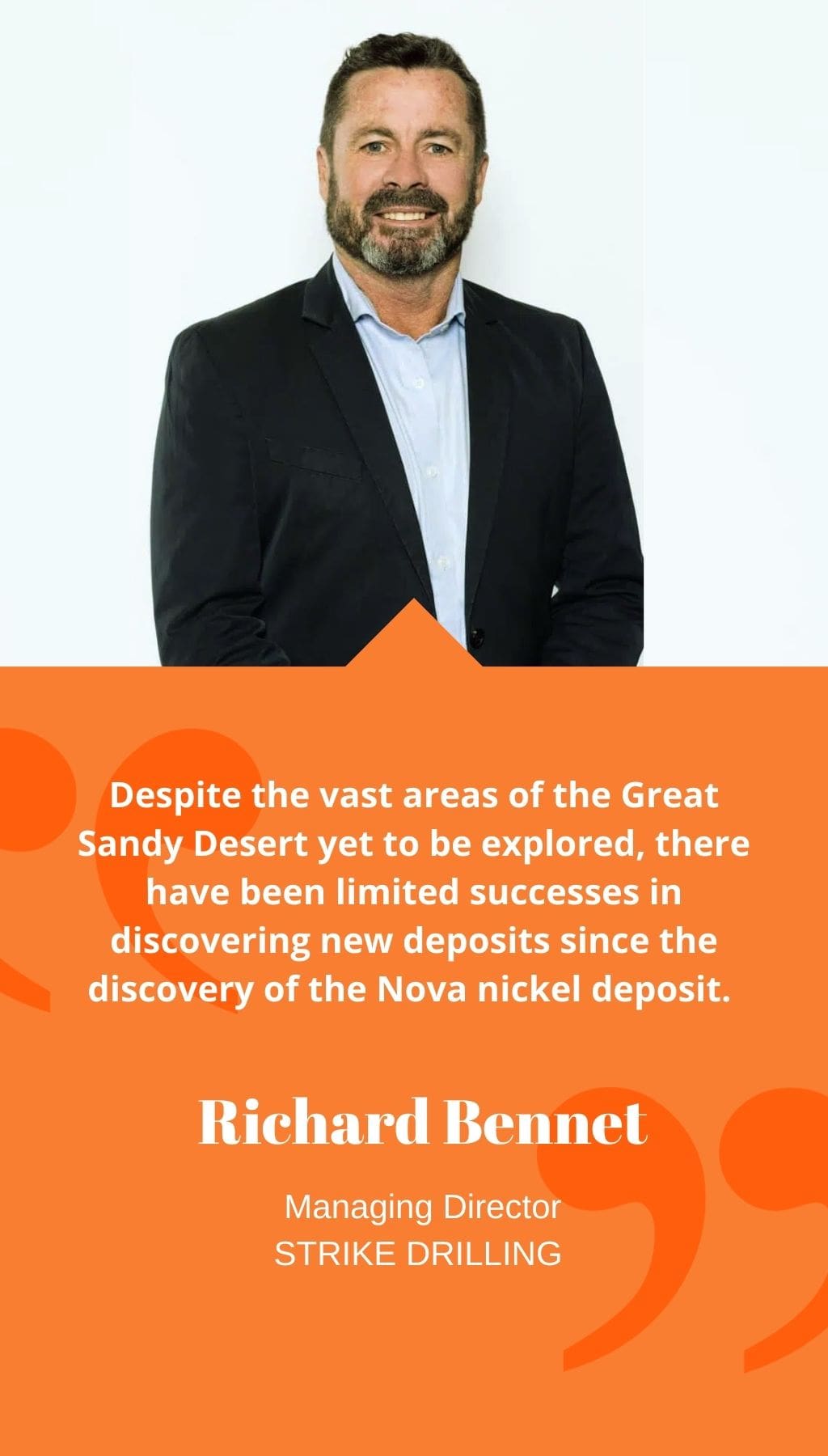
- Australia | 19 April 2017

Could you please explain why Strike Drilling decided to start its operations during the market downturn?
Strike Drilling was founded three years ago during a challenging time in the industry. Our goal was to establish a highly recognized and branded business with modern equipment that would attract companies looking for reliable drilling services. Since we launched during an off-market period, many companies had excess equipment they couldn’t sell, allowing us to obtain our rigs at competitive prices. We strategically positioned ourselves to be ready for the start of the next cycle. Currently, we have 45 staff, including field crew and a lean back-office headquarters. Our focus is on the field, and we’ve found that many people are interested in working for a small, well-maintained business.
How has Strike Drilling developed equipment to work in remote regions of Australia, and what advantages does it offer?
When we started, we introduced three truck-mounted drill rigs with deep drilling capacity of up to 700m. However, we wanted to offer something unique to the market, which led us to design the X350 track-mounted drill rig. This new model was developed in collaboration with geologists, drilling engineers, and our remote drilling expertise. It’s a cross between an air core rig and an RC rig, capable of drilling up to 300m deep. The X350 is perfect for tackling previously inaccessible remote areas, such as those in the Fraser Range region. This rig can traverse through desert regions, near lakes, and other remote sandy areas where we have been unable to access before. With this rig, we can push through the soft top rock and into the hard rock beneath to determine the material composition. We have also designed a grader blade that controls water and salinity in our support equipment, making our rigs fuel-efficient and capable of operating for two weeks without refueling. The X350 uses a Japanese carrier called Morooka that moves the rig at 15km per hour on rubber tracks, leaving zero footprint (6psi ground pressure), which is necessary with environmentally sensitive areas. In recognition of our innovation, the X350 model won the 2016 Golden Gecko Awards by the Department of Mines and Petroleum.
What is Strike Drilling’s primary focus in the mining industry, and how does it compare to water and gas?
Our primary focus is on greenfield exploration in mining. Currently, we have a three-year contract with Goldfields for brownfield exploration, where we have two drills operating at the Agnew gold mine. One of the drills is an X350 machine used for scout work, while the other, a larger RC machine, digs deeper. We also have three rigs working with Ramelius, with one X350 track machine trying to unlock unexplored ground. In terms of greenfield work, we have our sixth rig heading to the Great Sandy Desert to drill for Sipa Resources. We drill for various commodities such as gold, nickel, copper, and vanadium. We will also have two rigs drilling for Pilbara Minerals later this year for their lithium deposit.
Can you describe the government support in place to help explorers with their drilling operations?
AMEC is doing an excellent job with the Exploration Incentive Scheme (EIS), which offers drilling companies up to 50% of the funding for their direct drilling costs into the ground. As drilling is one of the most expensive aspects of the exploration business, the support is fantastic for drillers, clients, and shareholders alike.
What are the main challenges associated with drilling in greenfield operations?
Despite the vast areas of the Great Sandy Desert yet to be explored, there have been limited successes in discovering new deposits since the discovery of the Nova nickel deposit. It requires a substantial amount of funding to find these deposits, and we can certainly benefit from the government schemes available to support our exploration drilling programs.














